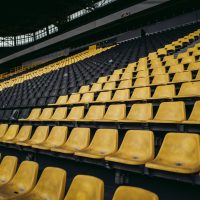Do you own a stadium? If so, you must know that regardless of whether individuals are going to your first game or going to stadiums regularly, seats from stadium seating suppliers can significantly impact your spectator experience.
Nevertheless, you don’t want to miss out on any scores in the game. Because of this, choosing a seat that matches your budget along with getting the best experience is very critical. Meanwhile, the choice of seating can have a considerable difference. And it is especially true if you are new to stadiums. It is a deciding factor if the spectators will come back to the game or not.
Seating Specifications
In an era where there are rising expectations, every spectator must be seated in well-designed venues. Moreover, individual stadium chairs from stadium seating suppliers must be installed rather than benches or bleachers. Also, these stadium seats should be attached to the main structure and ergonomically designed.
Backrests
The seating must be comfortable for the lower back and address other issues. And backrests must be of sufficient height to provide mid-back support, as this design prohibits the utilisation of tractor style seats which are typical in old farm tractors, which provide a tiny seating structure that does not provide any back support at all.
Proper backrests, on the other hand, address an essential need in many venues to prevent surging. Surging is a common practice of spectators who push forward, such as when celebrations are held when soccer games are won.
Importantly, FIFA World Cup organisers require that these standards be applied to every stadium that will host soccer game events during the World Cup.
Seat Width
Seats must be of an ideal width to ensure the comfort of audiences. Meanwhile, it is a temptation to maximise capacity through the use of narrow stadium chairs. But uncomfortable seating may reduce attendance in the long run.
Spectators can become alienated and highly uncomfortable with narrow seats and may never return to the game. So, the recommended seat width is at least 47 cm, and the absolute minimum is 45 cm. So, it is crucial to abide by these standards, as the seat width will also accommodate the bulky clothing that some spectators may wear.
Leg Room
The rows of seats should have enough distance from each other, so the knees of spectators don’t press up against the row in front of them. Sufficient spacing between rows will ensure that audiences can arrive and exit speedily even when other spectators are still in their seats. Moreover, adequate space is critical, especially in emergencies and evacuations. Hence, a backrest to backrest distance of 85 cm is recommended. Retractable seating backs also provide proper space between rows.
Sight Lines
Spectators must enjoy a direct sight of the field over the head of spectators seated two rows down the front. Besides, allowances must be made for the potential placement of ad boards around areas on the field.
Seat ID
The path to the section and a given seat row must be clear and identifiable. For that, a seat ID system should enable stadium seating numbering to be recognised easily. Attendees should never have to hunch down to see the numbers, and the numbers must be bold and not small or faded since such deficits slow down the entire process of entry.
Finally, it is crucial that stadium seating be fireproof, colourfast, and unbreakable even when exposed to weather elements. And to meet these standards, great caution must be taken for proper seat selection.


















